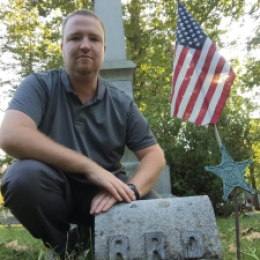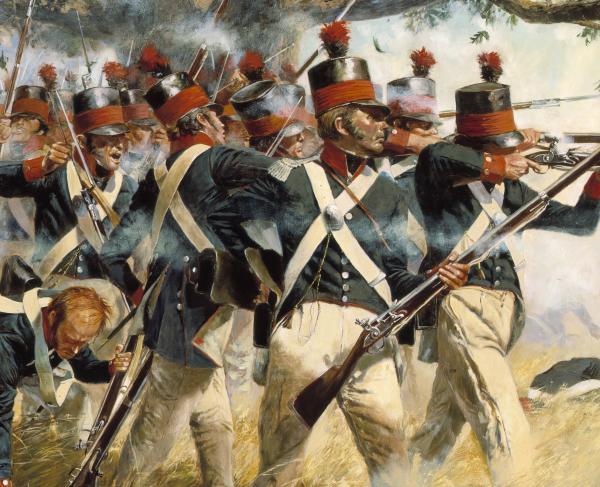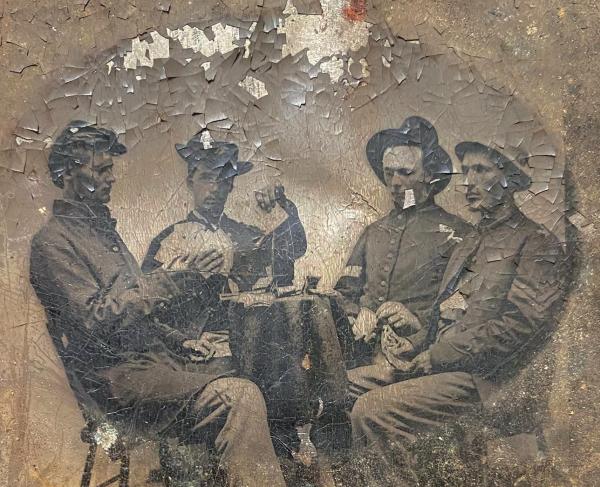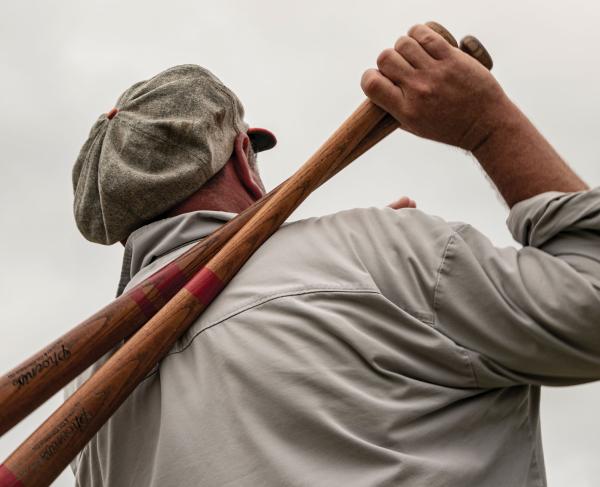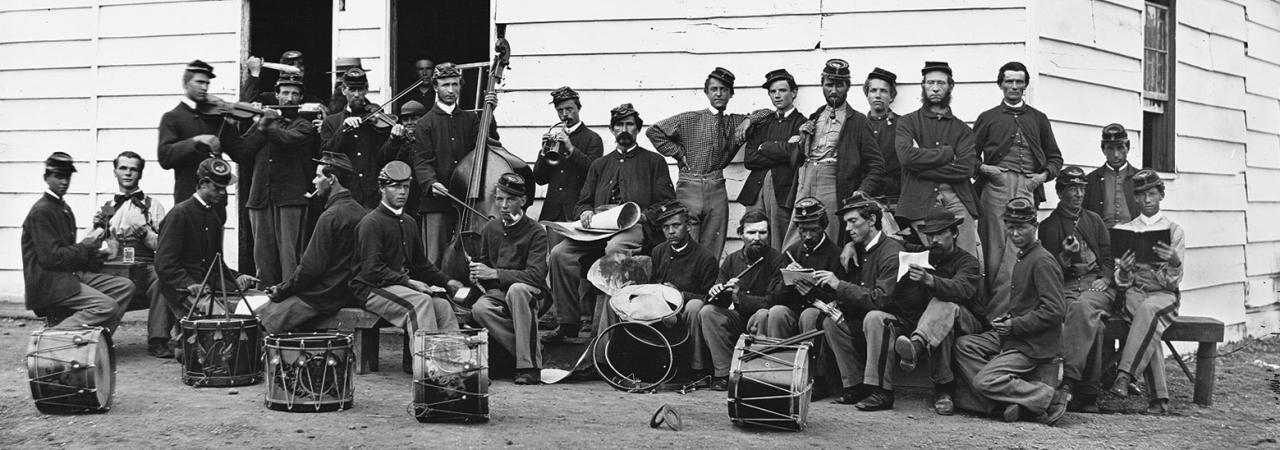
Drum Corps of 10th Veteran Reserve Corps by William Morris Smith.
From Revolution to Civil War, music has provided an outlet for American soldiers in camp and propelled them forward in battle. Lyrics were often emotionally charged and reflected the sentiments of turbulent times, serving to both unite and motivate men to continue in their causes. And while political and ideological debates persisted, it was music that provided a universal language that enabled warring people to bridge the divide.
With a population of nearly 1.5 million and growing, the 13 colonies had expanded rapidly by the late 1750s. The Industrial Revolution was dawning, and an influx of immigrants arrived from Ireland, Scotland, Italy and England, even as an ideological shift away from the motherland and toward independence emerged. Against this backdrop was a rich and diverse musical landscape composed of influences from numerous countries and traditions. And, as the individual colonies moved toward becoming a single country, so too did this uniquely American soundscape.
This period of immense change in the colonies was also seen in the world of music, which saw an increasing divide between the religious and popular realms. The very composition of ensembles shifted and grew, and the Classical Period of western art music was born. Although the new era spread across Europe and England, reaching larger audiences of more social classes, these popular musical trends were far less accessible to those living in the American colonies. Despite the small growth of large concert halls in the northern colonies, most performances saw one or several musicians gather in churches or at taverns and personal or community spaces. Colonists often wrote and performed music that spoke to their daily lives, utilizing common household instruments of this period such as harpsichords, violins and flutes, small gatherings allowed for the sharing of music among friends and family. As frustrations grew between the colonies and the Crown, music gave voice to the audience’s grievances through songs like “A Taxing We Will Go,” which included the lyrics: “The power supreme of Parliament our purpose did asist[sic], and taxing laws abroad were sent, which the rebels do resist….”
The fife was also a key instrument during the American Revolution. With its loud projecting capabilities, the troops were able to hear this instrument over the sounds of an army on the march or the cacophony of battle. A popular song of the era that prominently featured this instrument was “Yankee Doodle.” Still widely known today, it gained its familiarity in the American musical consciousness during the American Revolution. Originally, this tune was sung by British military officers to mock the sad state of the colonists and their army. The colonists embraced this mockery, and the tune provided them with a sense of camaraderie and patriotism. To the surprise of many British officers and enlisted men, Washington’s men turned the derogatory implications of this song around and used it as a song of defiance and pride. Thus, “Yankee Doodle” rose to be a song of not just colonial, but also national acclaim.
By the 1860s, western art music had entered the Romantic Era. Closer to home, musical styles such as sacred music, brass bands and minstrel shows were popular in both the North and South. Although divided by conflict, the universal language of music often stretched across the great chasm the war produced.
Brass bands and community bands had grown into popularity before the Civil War, and once armies were in the field, the music of military fife and drum corps became popular there and on the home front. Music provided a sense of comfort and allowed men on both sides to transcend the great political and ideological divide that separated their country. Popular tunes were accessible and familiar to the common man from both the North and South, as many soldiers did not have the opportunities to immerse themselves in live music found in metropolitan cities. Thus, bandsmen played popular tunes such as: “Eatin’ Goober Peas” and “When Johnny Comes Marching Home,” as well as others, including “Battle Cry of Freedom,” that might have alternate lyrics applied depending on which army was singing along. These songs were known for their steady beats and motivational words, which helped the soldiers press on during tough times and long marches.
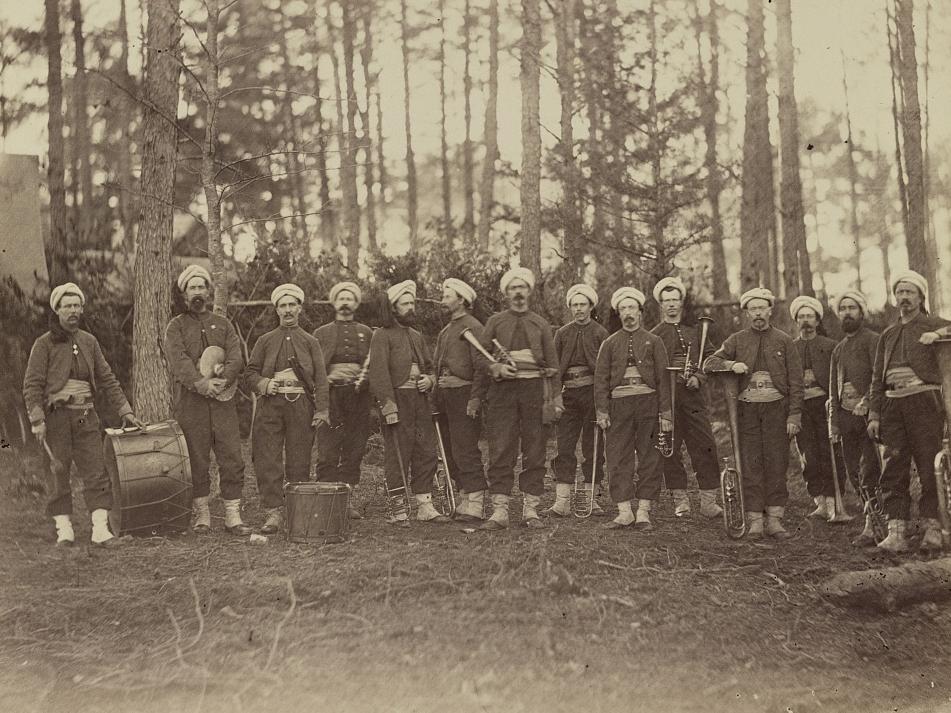
Singing, playing and hearing music allowed troops to reminisce about peaceful times at home with family and loved ones, to bond and to temporarily escape from the horrors of battle. Author Kenneth Bernard wrote, “In camp and hospital they sang —sentimental songs and ballads, comic songs and patriotic numbers … The songs were better than rations or medicine.” Military bandsmen were not the only ones to provide music, though. Some soldiers brought their own banjos, fiddles and guitars. Out of these instruments came many popular camp tunes of the era, including: “Lorena,” “Tenting on the Old Camp Ground,” “Vacant Chair” and “The Yellow Rose of Texas,” to name a few.
The musical world around soldiers and civilians during the antebellum and war years provided support, guidance, escape and entertainment. Confederate Gen. Robert E. Lee, commander of the Army of Northern Virginia, agreed, stating, “I don’t believe we can have an army without music.” In a sense, then, we cannot understand one of the most important moments in our history without understanding its popular musical stylings.
